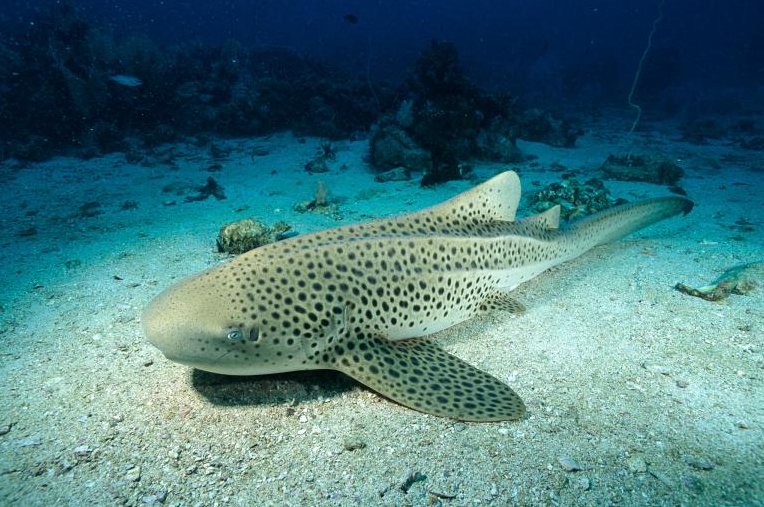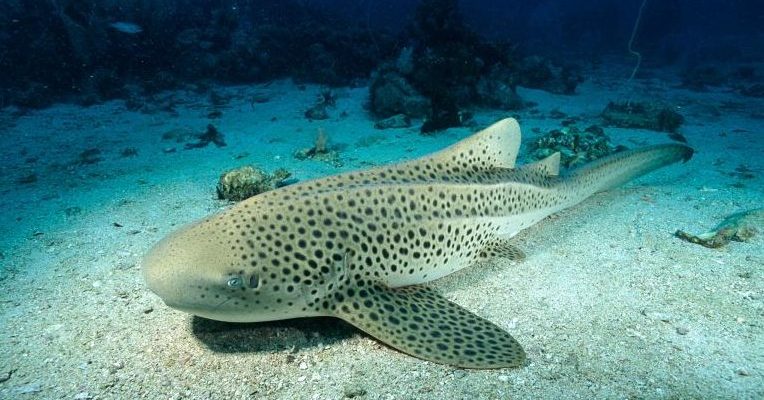
Now, you might be wondering why zebra sharks are so interesting. Well, these sharks have a unique blend of features that make them stand out. They sport a striking pattern of stripes as juveniles, reminiscent of the creatures they’re named after. However, they turn into more spotted patterns as they mature. This metamorphosis is just one part of their evolutionary journey that showcases how adaptability is key in the aquatic world.
So, grab your snorkel gear and let’s explore the fascinating evolutionary journey of the zebra shark!
What Are Zebra Sharks?
Zebra sharks inhabit the shallow waters of the Indo-Pacific region, often seen lounging on the ocean floor. They’re not your typical predatory sharks; in fact, they mostly feast on small fish, crustaceans, and mollusks. These sharks can grow up to about 10 feet long, but they tend to have a non-threatening presence.
You might see zebra sharks in aquariums, where their calm behavior and unique appearance make them a favorite among visitors. Unlike other sharks, zebra sharks have a flattened body shape and long, whip-like tail. This design allows them to maneuver easily through rocky crevices or coral reefs. Their gentle nature has earned them a spot in both the hearts of aquarium-goers and the aquatic ecosystem!
The Unique Lifespan and Growth Cycle
Zebra sharks have a relatively long lifespan in the wild, often living up to 25 years. But what’s truly fascinating is their growth cycle. As juveniles, they are covered in distinct, bold stripes, which act as a form of camouflage against predators. Honestly, it’s like they’ve got their own superhero suit—but as they mature, those stripes fade into a more spotted pattern.
This change isn’t just for looks; it’s evolutionary smart! The adults’ patterns help them blend into the seafloor, making it harder for larger predators to spot them. You might even find yourself marveling at how perfectly nature designs these patterns to help with survival. The transformation from stripes to spots illustrates how zebra sharks adapt to their environment over time.
The Evolutionary Lineage of Zebra Sharks
Let me explain something cool about zebra sharks: they belong to a group of sharks called the Orectolobiformes, which includes the whale shark and carpet sharks. Their lineage can be traced back more than 100 million years! Imagine that—these sharks have been swimming around since the time of dinosaurs.
Their evolutionary journey reveals a lot about how species adapt over time. Zebra sharks have developed unique features to thrive in their environments, like their flattened bodies for easier maneuvering on the ocean floor. This evolutionary history reminds us just how ancient and interconnected life can be in the ocean.
Behavior and Habitat
Zebra sharks prefer shallow coastal waters and coral reefs, where they can hide among rocks and coral. This preference tells us a lot about their behavior. They are mostly nocturnal, becoming active hunters at night. During the day, you can find them resting in caves or under ledges.
You might wonder how they manage to navigate their surroundings. Zebra sharks use a combination of their keen eyesight and the ability to sense vibrations in the water to locate prey. Plus, their smooth, rounded bodies help them slide through tight spaces in search of food. It’s like watching a skilled acrobat at the circus—graceful yet powerful.
Conservation Status and Challenges
Unfortunately, zebra sharks face threats from habitat loss, overfishing, and the illegal shark fin trade. They are currently classified as “vulnerable” by the IUCN (International Union for Conservation of Nature). This status highlights the importance of conservation efforts to protect these unique creatures.
Here’s the thing: supporting marine conservation can make a difference. You can help by choosing sustainable seafood, supporting marine protected areas, and advocating for policies that safeguard these habitats. Every little action counts and helps ensure that zebra sharks can continue their evolutionary journey for generations to come.
The Future of Zebra Sharks
As we look ahead, the question remains: what does the future hold for zebra sharks? With ongoing habitat degradation and climate change affecting marine ecosystems, their survival hangs in the balance. Research and conservation efforts are essential to understand how to protect them better.
You might be excited to know that aquariums and marine research centers are working hard to promote breeding programs and educational initiatives. By raising awareness about zebra sharks and their ecological role, we can inspire individuals to take action for the oceans they call home.
Why Zebra Sharks Matter
In the grand scheme of ocean health, zebra sharks play an essential role. As predators, they help maintain the balance of marine ecosystems by controlling the population of their prey. This balance is vital for the health of coral reefs and ocean life overall.
So, you might ask yourself, “Why should I care about zebra sharks?” Well, they’re an excellent reminder that every creature contributes to the tapestry of health in our oceans. By understanding their evolutionary journey and challenges, we can work together to ensure their existence for future generations.
As we wrap up our exploration of the zebra shark’s fascinating evolutionary journey, it’s clear that these gentle giants deserve our attention and protection. Whether you’re a marine enthusiast or just curious about the ocean, understanding these creatures helps foster a deeper appreciation for the biodiversity that surrounds us. Let’s commit to protecting not just the zebra shark, but the myriad of marine life that shares our planet.

